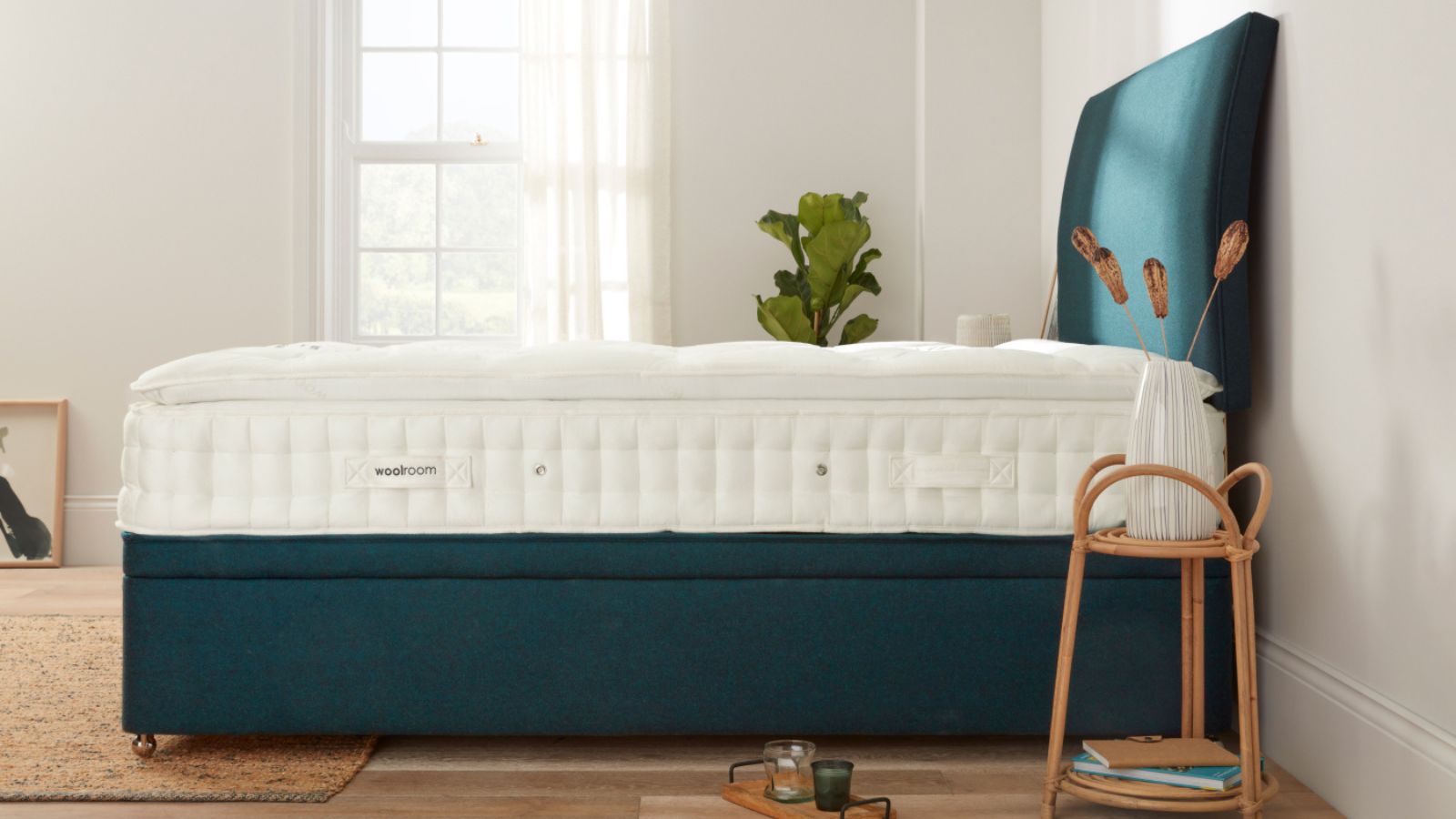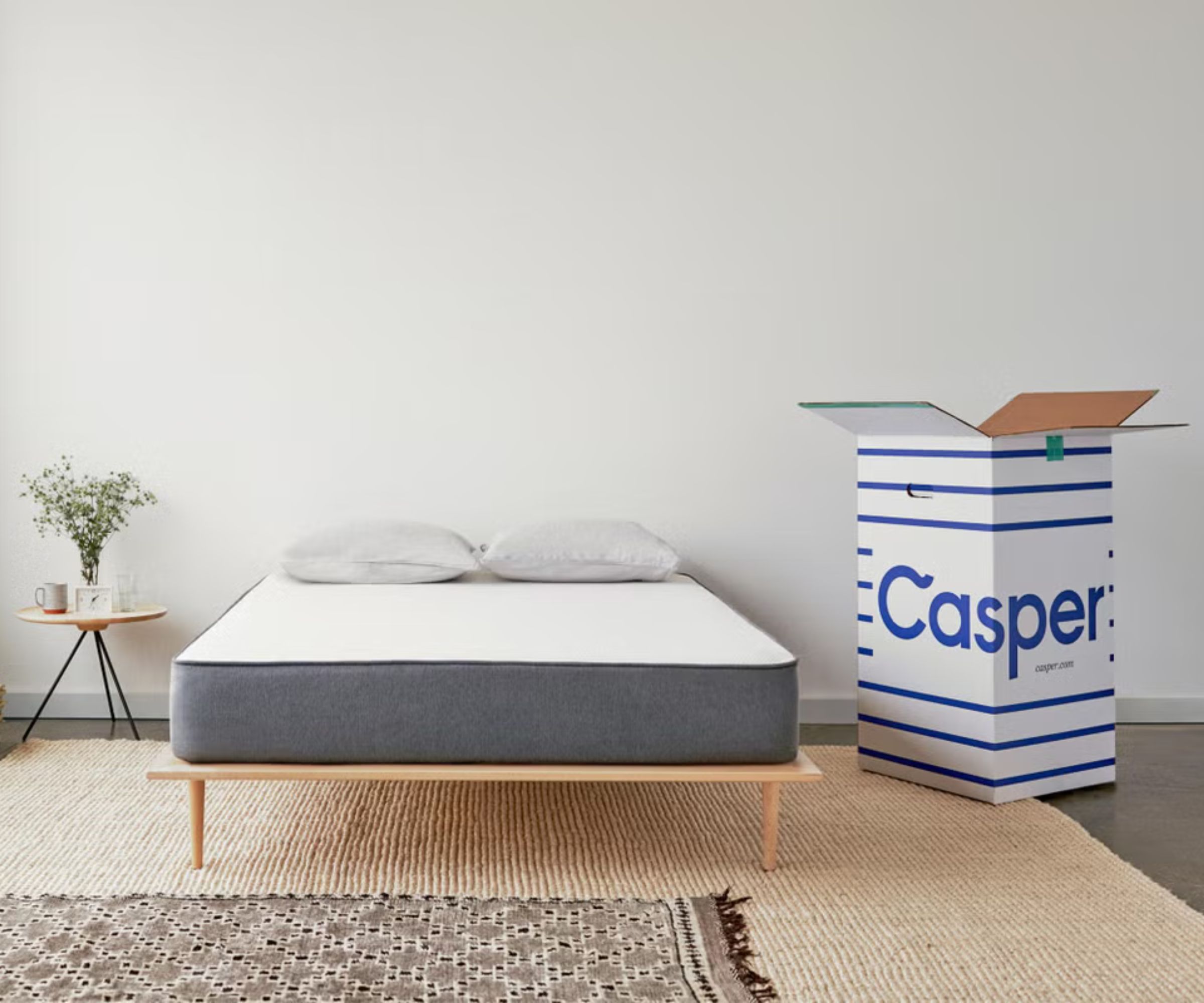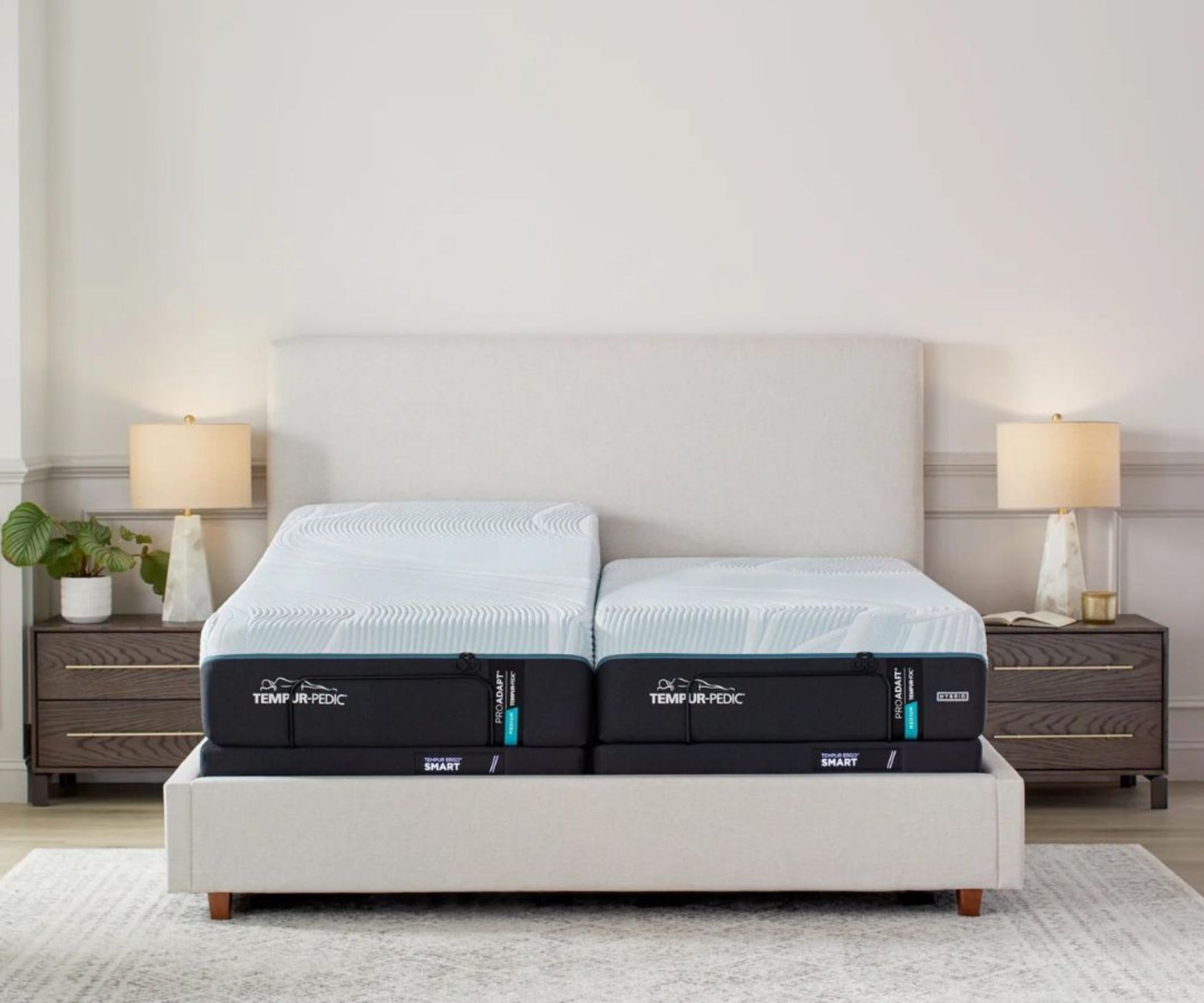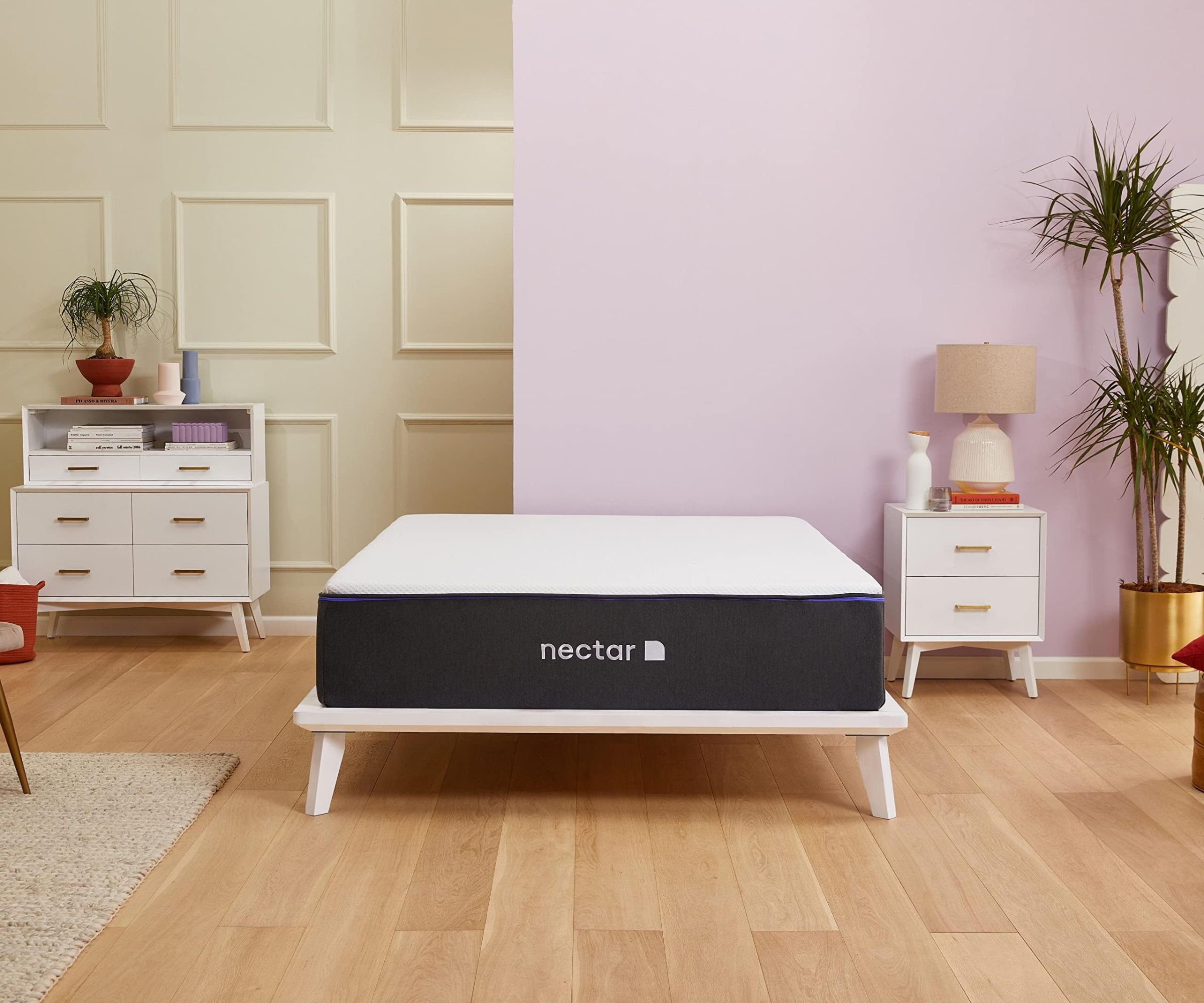How often should you turn your mattress? Experts reveal the best time to flip or rotate
I asked mattress manufacturers how often you should flip or rotate your mattress to elongate its lifespan – and how to do it safely


Turning your mattress is an essential part of proper care. Every time you move your mattress around, you allow air to flow into and out of the mattress, while ensuring that wear and tear is evenly distributed across the surface area. Mattresses aren't cheap, so regular rotation is the best way to protect your investment − and it's totally free.
There are two ways to turn your mattress: rotating or flipping. These are quick and easy ways to prolong the life of your mattress − all you need is a friend or family member to help you lift and turn your mattress. Before you begin, it's worth knowing that some mattress types respond better to rotating than flipping − more on that later.
As H&G's resident sleep writer, I lead a team of expert testers in the search to find the world's best mattress. We sleep on mattresses for months, if not years, before we write our reviews to show you how a mattress holds up over time. We've learned how – and when – to turn a mattress to prevent excessive wear and tear.
How often should you turn a mattress?
I asked a panel of mattress manufacturers for their top tips on turning a mattress to ensure solid support across the surface. Here's what they had to say.
How often should you turn a mattress?

I asked Martin Gill, managing director of the luxury mattress manufacturer Vispring, how often you should turn a mattress. He says it all depends on the mattress type − whether the mattress is double-sided (the same at the top as it is at the bottom) or single-sided (with a different construction on top compared to the bottom). For example, an old-fashioned innerspring is a double-sided mattress, while a hybrid mattress is single-sided.
'Double-sided mattresses can be flipped and, for the first few weeks after purchase, should be turned over once a week,' says Martin. 'After that, once a month will suffice.'
Martin says that 'single-sided mattresses (such as those with memory foam on top) should be rotated from top to tail once a week for the first three months after purchase in order to prevent lumps and bumps in the mattress. After that, rotate it just once a month.'
'For natural fiber mattresses, filled with wool and cotton, I recommend that you flip your mattress twice a week for the first three months and every few months after this,' says Martin. 'This should encourage even settlement of the mattress fillings, extending the life of the mattress.'
How to turn a mattress

Like I said, there are two ways to turn a mattress: rotating or flipping. Rotating your mattress is part of the flipping process, but it isn't necessary to flip your mattress to rotate it.
'However you want to turn your mattress, make sure that you get someone to help you,' advises Martin. 'With two people carrying the weight of the mattress, you're far less likely to lose control and bend the mattress, break any furniture, or injure yourself.'
How to rotate a mattress
1. Strip your bed and place your bedding out of the way in a neat pile. Move any surrounding furniture, such as nightstands, away from the bed.
2. If your mattress has handles, grab hold of them. If it doesn't, slide your hands under the edge of the mattress and get a firm grip of the corners.
3. Lift your mattress and rotate it 180 degrees, from top to tail. Now, the top of the mattress where you used to rest your head should be at the bottom, by your feet.
If all you're looking to do is rotate your mattress, then congratulations – you've done it. If you want to flip your mattress, then you've still got a few more steps to follow.
How to flip a mattress
4. Gently drag your mattress towards you until the far edge is in the center of the bed frame.
5. Push your mattress upright so that it sits on its side.
6. Ask your friend or family member to take hold of the mattress handles and gently tilt until the mattress is turned over. (If you're flipping your mattress on your own, then carefully walk round to the other side of the bed and tilt the mattress yourself. Don't try to push your mattress into place − it's a large weight, and you want to control it).
Why should you turn a mattress?

'Regularly flipping or rotating your mattress will keep the comfort fillings evenly distributed, reducing sagging and dips,' says Steve Adams, CEO of Mattress Online. 'Turning your mattress means you'll use each side equally, which should help its supportive properties to perform better for longer.'
'Getting into the routine of flipping your mattress multiple times a year will elongate the lifespan of the mattress,' says Steve. He also advocates for regular spot cleaning to reduce the build-up of dust, dirt, and dander inside the mattress. If I were you, I'd invest in one of the best mattress protectors to safeguard against sweat, spills, and stains – it makes mattress maintenance much easier.
Are there any downsides to turning a mattress?

Back when everyone had an old-fashioned innerspring, flipping your mattress was widely regarded as best practice. That's because an innerspring feels the same on the top as it does at the bottom − the coils in the core are surrounded by a thin layer of wool and cotton. Whichever way you flip an innerspring, you should get the same balance of comfort and support.
Now that many of us sleep on memory foam models, flipping your mattress might not be the best idea. Your average memory foam mattress features multiple layers of foam, with a firmer, higher-density base and core and softer, lower-density comfort layers. If you flip your memory foam mattress, then you won't get the right balance of comfort and support.
The same is true of a hybrid mattress: the steel springs are designed to go on the bottom, and the memory foam is made to stay at the top. If you flip a hybrid mattress, you'll get insufficient support from the foam and serious discomfort from the springs.
Most mattresses respond well to rotation – that is, unless the foam or springs are arranged in ergonomic zones. An ergonomic mattress feels firmer in certain areas than others in a bid to target support to different parts of your body. If you rotate an ergonomic mattress, then you reverse the ergonomic order, and you won't get the specialized support you need.
Final thoughts
Turning your mattress a few times a year is a quick and easy way to elongate the lifespan of your mattress, and it doesn't cost a thing. Another important aspect of mattress maintenance is keeping it clean. I suggest you invest in the best mattress protector to safeguard against sweat, spills, and stains. It's an invaluable bit of bedding and it should only set you back about $100.
Sign up to the Homes & Gardens newsletter
Design expertise in your inbox – from inspiring decorating ideas and beautiful celebrity homes to practical gardening advice and shopping round-ups.

Emilia is our resident sleep writer. She spends her days tracking down the lowest prices on the best mattresses and bedding and spends her nights testing them out from the comfort of her own home. Emilia leads a team of testers across America to find the best mattress for every sleep style, body type, and budget.
Emilia's quest to learn how to sleep better takes her all around the world, from the 3Z mattress factory in Glendale, Arizona to the Hästens headquarters in Köping, Sweden. She's interviewed luxury bedding designers at Shleep and Pure Parima, as well as the Design Manager at IKEA. Before she joined Homes & Gardens, Emilia studied English at the University of Oxford.
-
 Victoria Beckham has a unique formula for perfect bedding: 'Very expensive sheets and cheap pillows' – you can follow her example from $15
Victoria Beckham has a unique formula for perfect bedding: 'Very expensive sheets and cheap pillows' – you can follow her example from $15Victoria revealed she goes for crisp, white bed sheets and pillows with neck support from Target – and you can shop similar buys at an ultra-low cost
By Hannah Ziegler Published
-
 I just discovered the best non-toxic product for getting rid of ants in your yard – and you probably already have it in your bathroom cupboard
I just discovered the best non-toxic product for getting rid of ants in your yard – and you probably already have it in your bathroom cupboardThis household item is an effective ant deterrent that doesn't leach harmful chemicals into your soil
By Tenielle Jordison Published